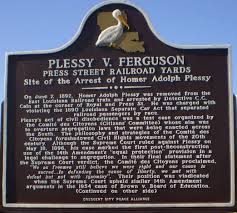The New Jim Crow

In 2012, Stanford University scholar Michelle Alexander gave us a book that is as important as it is well written. The thesis of The New Jim Crow is clear and describes a problem that will not go away on its own – the race-based explosion of the American prison population.
The New Jim Crow
The New Jim Crow: Mass Incarceration in the Age of Colorblindness
by Michelle Alexander with an introduction by Cornell West
ISBN-13: 978-1595586438 / ISBN-10: 1595586431
White racism at work
Her argument in this work makes all too much sense: the incarceration of (mostly young) African American men may be legally justified by proven drug possession, but in actual fact the root cause of this situation – and of the Republican party’s (and their Democrat fellow travelers) infamous “war on drugs” – is a policy of social control fueled by White racism.
American prison system and race
Says Alexander: “The stark and sobering reality is that, for reasons largely unrelated to actual criminal trends, the American penal system has emerged as a system of social control unparalleled in world history, And while the size of the system alone might suggest that it would touch the lives of most Americans, the primary targets of its control can be defined largely by race.
This is an astonishing development, especially since given that as recently as the mid 1970’s, the most well respected criminologists were predicting that the prison system would soon fade away. Prison did not deter crime significantly, many experts concluded. Those who had meaningful economic and social opportunities were unlikely to commit crimes regardless of the penalty, while those who went to prison were likely to commit crimes again in the future.
The growing consensus among experts was perhaps best reflected by the National Advisory Commission on Criminal Justice Standards and Goals, which issued a recommendation in 1973 that “No new institutions for adults should be built and existing institutions for juveniles should be closed.” This recommendation was based on the finding that “the prison, the reformatory and the jail have achieved only a shocking record of failure.” There is overwhelming evidence that these institutions create crime rather than prevent it.”
World without prisons once popular idea in U.S.
These days, activists who advocate a “world without prisons” are often dismissed a quacks, but only a few decades ago the notion that our society would be much better off without prisons, – and that the end of prisons was more or less inevitable – not only dominated mainstream academic discourse in the field of criminology but also inspired a national campaign by reformers demanding a moratorium on prison construction. Marc Mauer, the executive director of the sentencing project, notes that what is most remarkable about the moratorium campaign in retrospect is the context of imprisonment at the time. In 1972, fewer than 350,000 people were being held in prisons and jails nationwide, compared with more than 2 million people today. The rate of incarceration in 1972 was at a level so low that it no longer seems in the realm of possibility…”
The New Jim Crow runs deep
This book is a must-read for anyone with a social conscience and anyone who is interested in fixing a problem whose existence exacts a toll from all Americans.
